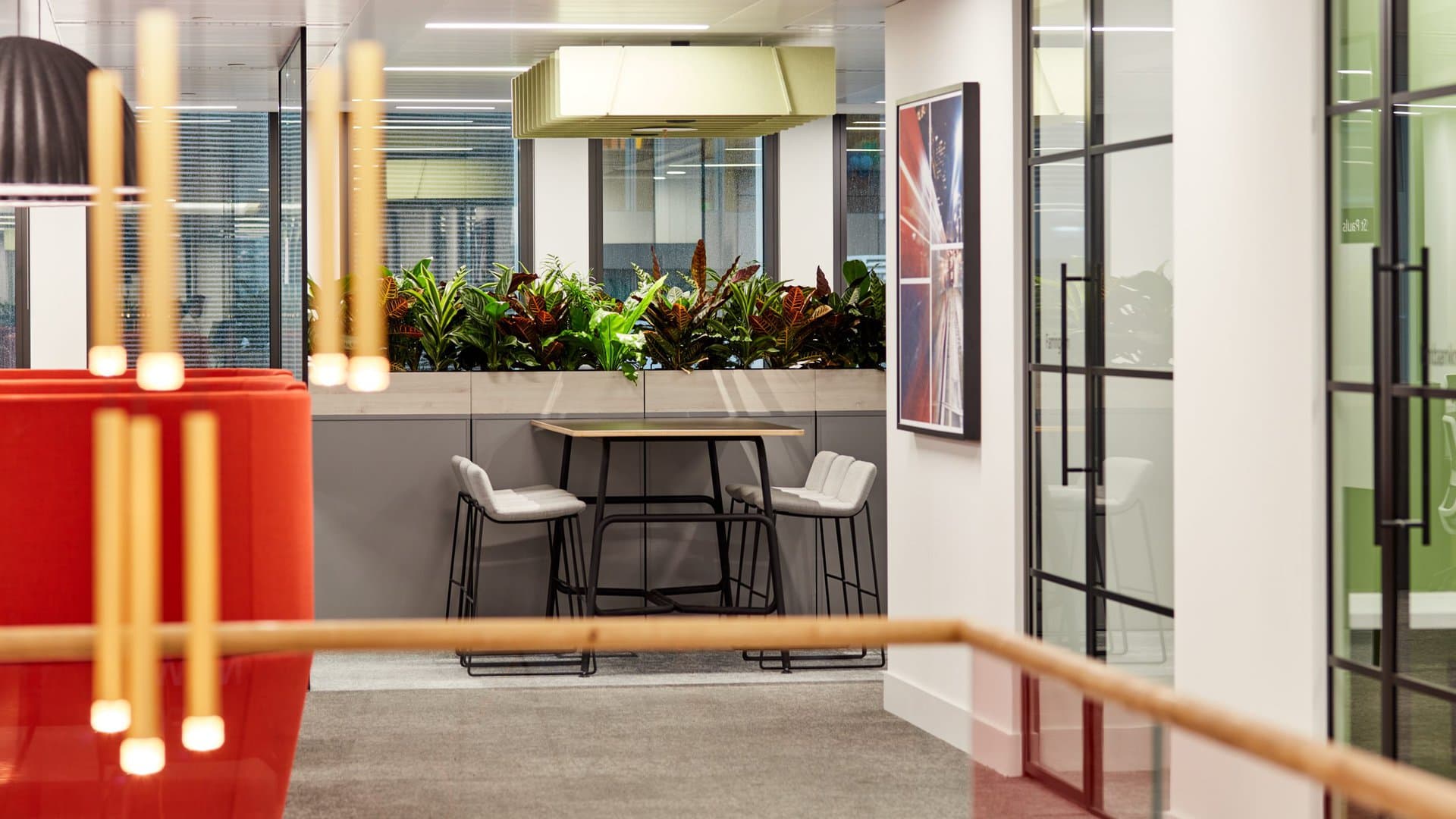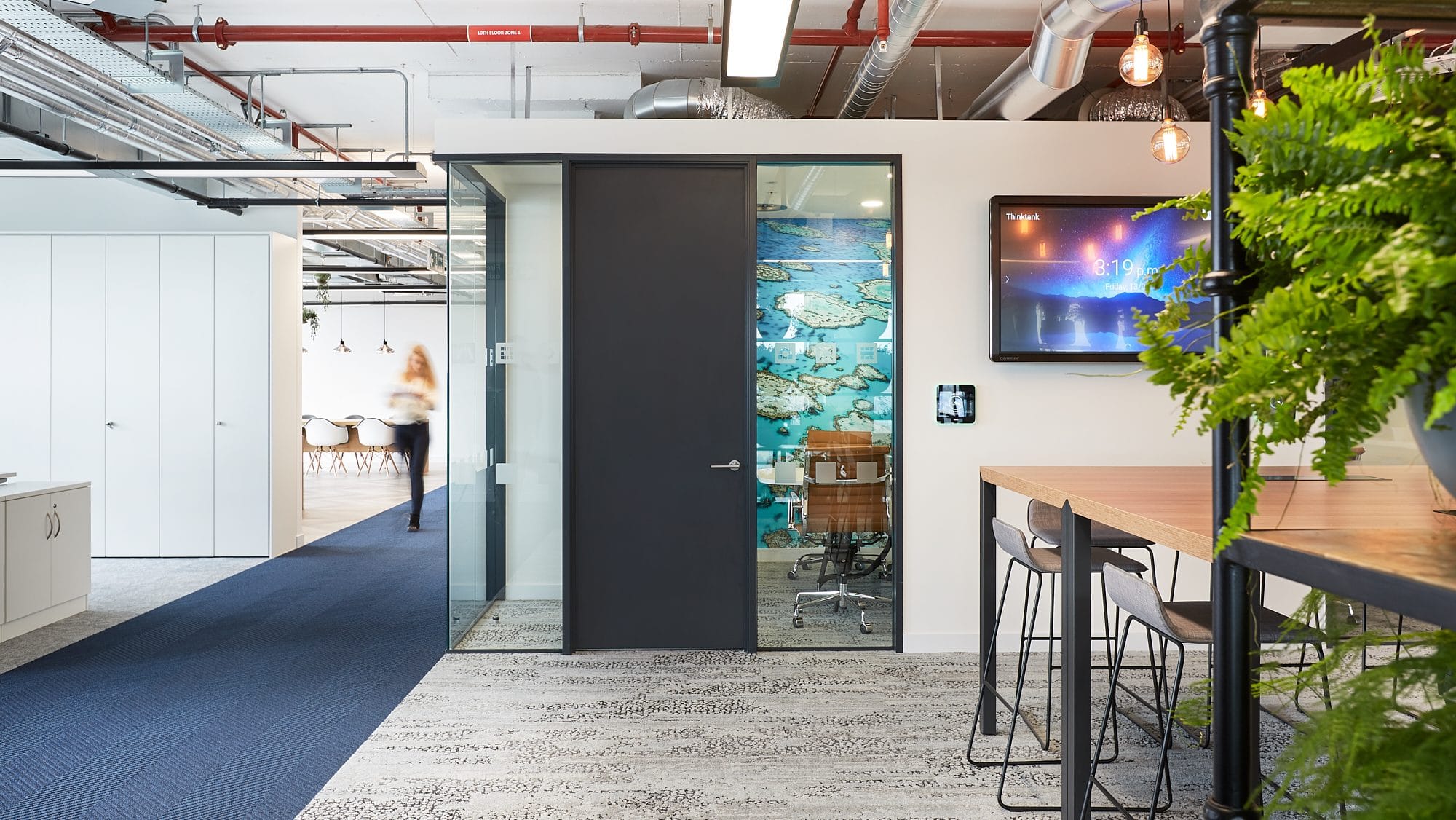Back to basics: 5 strategies for illuminating workplace lighting
Discover essential strategies for optimal workplace lighting design.

In the realm of workplace design, lighting emerges as a crucial ally, significantly influencing how teams operate, behave and experience their surroundings. The importance of office lighting cannot be overstated, as it not only impacts productivity but also holds substantial implications for the well-being of your workforce.
In this article, we delve into the essentials of workplace lighting design, presenting five fundamental strategies to illuminate your workspace effectively.
1. Tailoring brilliance to tasks: understanding activity-based workplace lighting
Effective lighting design begins with a nuanced understanding of the diverse activities occurring within your workspace. Recognising that different tasks demand varying light levels, this tailored approach ensures that lighting aligns with the unique needs of task-focused areas and more relaxed reception or breakout spaces.
For instance, task-focused zones benefit from bright white light, promoting heightened focus and productivity, while softer diffused illumination suffices for areas intended for relaxation, such as reception or breakout spaces.

2. Seamless flow of light: navigating transition zones
Transition zones within a workspace play a pivotal role in maintaining a cohesive and comfortable environment. Acknowledging the significance of transitions between different lighting zones is crucial. Abrupt shifts in light levels can strain the eyes and disrupt workflow.
Creating a gradual and seamless transition from communal spaces to individual workstations fosters not only a more comfortable atmosphere but also enhances the visual harmony of the workspace. Thoughtful consideration of lighting transitions contributes significantly to the overall flow and aesthetics of the office.
3. Lighting’s impact on mental health: prioritising employee well-being
In discussions about mental health, the profound impact of lighting is often overlooked. Studies reveal that a third of individuals consider workplace lighting a crucial factor in their daily health considerations. The implications of inadequate lighting extend beyond mere discomfort, leading to issues such as eye strain, headaches and fatigue. Addressing concerns like Seasonal Affective Disorder (SAD) becomes imperative, emphasizing the strategic placement of high-use areas near natural daylight sources for a holistic approach to employee well-being.
Additionally, fostering a connection to nature through well-designed offices, where main desking areas are strategically placed near windows, contributes to a healthier and more invigorating workspace.

4. Types of workplace lighting: navigating the spectrum for productivity
Navigating the diverse spectrum of available lighting options is crucial for crafting an effective lighting strategy that caters to the varied needs of your workspace. From bright and warm white lighting fostering energy and productivity to dim lighting creating restful zones, understanding the nuances is key.
Categorising lighting into general/ambient, accent and task lighting allows for a layered approach. This ensures a well-balanced illumination setup that not only meets functional requirements but also contributes to the overall aesthetic appeal of the office space.
5. Layered lighting: crafting the perfect atmosphere
The thoughtful layering of different lighting types is the cornerstone of creating a harmonious atmosphere within the workspace. General or ambient lighting, responsible for setting the overall mood, should be carefully balanced to avoid glare and ensure uniform illumination. Accent lighting, providing aesthetic value and creating focal points, enhances the visual appeal of specific areas within the office. Task lighting, catering to specific work areas, reduces glare and promotes comfort, fostering an environment where everyone can work comfortably and efficiently.
The synergy of these layers results in a workspace that not only looks appealing but also supports the well-being and productivity of your team.
By adopting these strategies, you can ensure that your office space is not just illuminated but optimised for the success and happiness of your workforce. If you’re ready to enhance the aesthetic, mood and productivity of your workplace through thoughtful lighting design, get in touch.


